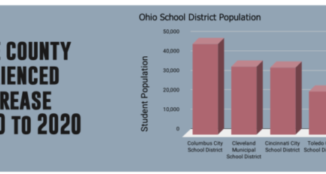
photo credit: Lilly Wood
In the summer, the Supreme Court overturned Affirmative Action after 45 years of the policy. The decision ignited discussion and discourse across the country. And while the ruling may have been decided within the walls of the Supreme Court, it directly impacts the people within the walls of schools nationwide.
Back in the 1960s, when the Civil Rights Movement was making tremendous strides in cities all over America, Affirmative Action was first conceived. In times when African Americans and other minorities did not have the same rights as whites, Affirmative Action sought to generate racial equality, according to The Education Trust.
Affirmative Action is widely known as “positive discrimination.” Its supporters argue that to make up for centuries of racism and discrimination against people of color, institutions must take active measures to include them in today’s world, according to Forbes. This extends to the workplace, government, and perhaps most controversially, schools. Many question whether this is fair.
“It definitely depends on who you are talking to,” senior Taanishi Gulati, a student who went through the college application process, said. “The wide range of students applying to college differ in race, sexuality and other backgrounds would have different opinions.”
For years now, college applicants have been required to tell schools their race. That ended with last summer’s ruling.
“The absence of affirmative action allows all students to equally showcase their abilities and eligibility to college, regardless of background, which can be seen as a positive thing to most,” Gulati said.
However, the debate is still alive. Supporters of Affirmative Action strive for equity. Equity has a different meaning than equality, the word it is often associated with. According to The George Washington University, “equality means that every person has the same resources or opportunities.” Equity, on the other hand, recognizes that everyone comes from different circumstances and those must be taken into account to level the playing field. To achieve equity, measures must be taken.
Measures like Affirmative Action. In short, it is designed to help marginalized groups climb the socioeconomic ladder and receive more opportunities. But some are not convinced that it does that.
“I am not convinced that it helps as much as people think or hurts as much as people think,” professor at Cedarville University, Mark Smith said. “The biggest way it helps is to create opportunities for people where none may have existed before, but it is up to the individual to take advantage of the chance they are given.”
According to Data USA, Harvard University is 34.6 percent White and 13.6 percent Asian, while only 6.21 percent are Black. When reading these statistics, many supporters of Affirmative Action think of these numbers as fuel for their argument. To correct these inequities, they reason, admission officers need to increase the number of students of color in the school.
In the particular case of Harvard, inequality runs deep. For a long time, Harvard had “legacy admissions,” which were gifted to the children of wealthy lineages. Of course, the children benefitting from these privileges were invariably White, according to TIME Magazine.
But according to Reform Education Now, more than 100 colleges and universities have disposed of legacy admissions since 2015. This policy is to make college admissions more fair. But when do these corrections cross a line? What is the best approach to achieving equality?
“I think the fairest approach to affirmative action is to discriminate on the basis of non-racial factors like parental income or wealth, the location or quality of the school attended, parents’ levels of education and things of that nature,” Smith said.
Affirmative Action has been applied not only to college admissions but also to the workplace and government. The Supreme Court’s decision is only one chapter in a longer story. For now, with the policy out, the world of college applications may look different.
“It means colleges will continue to discriminate but not as obviously on the basis of race,” Smith said. “Race, in my mind, is too crude of a measure and does not always measure student need. Students should apply broadly, just as always.”
The debate will continue. Affirmative Action has been applied not only to college admissions, but to the workplace and government. The Supreme Court’s decision is only one chapter in a longer story. Many will continue to discuss whether Affirmative Action is needed, but in the end, both sides on the issue argue on the basis that their position leads to a more equal society. So in a world as divided as ever on issues like these, it is reassuring to know that the same thing is wanted by all.


